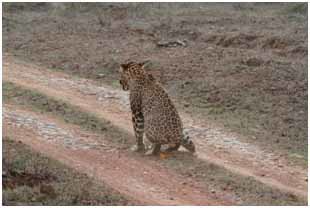
Wild Animal Communication Methods
Language is a medium through which people communicate. There are so many languages in this world and human beings use them for communication. Have you ever found yourself in a foreign country where they don’t understand your language? Well, even in such places, you manage somehow with the help of sign languages and other things. And, that is because you have the sixth sense, which is the intelligence. But, how do you think a wild animal would communicate?
How do wild animals communicate?
- Even if the animals do not know how to speak, they have their own ways for communication. The whales sing, the wolves howl, the frog croaks, the bird will chirp, the dog will bark and the list goes on. If you have a pet dog in your house, you would probably understand his feelings when he waves his tail.
- A lot of the wild animals depend upon verbal as well as non verbal modes of communication. And, this includes
- calls or sounds
- waving of tails
- marking of scents using urine and feces
- chemical cues
- gestures made with the help of postures, visual signs etc.

Leopard marking territory using urination
What form of non-verbal communication is used by the wild animals?
- The animals are quite alert and easily communicate with the help of smells. They pass on messages to each other by releasing pheromones which are the airborne chemicals. This has an effect on their social behaviors and their reproduction techniques.
- Have you seen the bees swarming around and dancing? They do it when they find the nectar. So, this is a way of communicating to the other bees so that they can also reach that place.
- The much adored chimpanzees meet each other and welcome each other by touching of hands.
- The elephants show their affection towards each other by entwining the trunks.
- And, the massive gorillas show their anger by sticking out the tongues.
- The Giraffes will press together their long necks when they feel attracted to the other giraffe.
- Horses show their affection by rubbing their noses.
- If a Kangaroo senses danger, it will start thumping with its hind legs which will give warning to the other kangaroos.
- Dogs make use of facial gestures like snarling when they sniff something bad.

(Crested Serpent Eagle defecating to indicate scared behavior)
In fact, by using these methods, these animals can easily connect with their mates and attract them. And, they can find out and separate out friends from the foes. They can alert the other animals and give warnings about the oncoming dangers and incoming predators or attackers. Other than that, they can also communicate about food availability and the climate. These signals are learnt by the animals instinctively or they learn from the other animals.
Location determines the communication style
Did you know that the blue whales make use of various patterns of tones, pulses, pitches and they vary from place to place? So, depending upon the place they are from, their sound wavelength might vary. Even the birds use the same techniques and the birds which actually live in the bordering areas communicate in bilingual methods.
But, lately, the animal communication has seen a drastic change and this is due to the level of noise pollution around. With growing urbanization and cutting down of forests, the animals do not have much of a natural habitat left. Also, they need to be louder in order to be heard. And, most of the animals have actually changed their sound levels.
What does the research prove?
As per the research done by Chomsky in 1957 and Pearce in 1987, the animal communication does not have any kind of grammar. While the humans learn the language skills and build on the vocabulary because of their innate intelligence, animals do not learn any such thing. As per Hockett, there are 13 features which go into a language. And, the animals are actually capable of learning the languages and communication systems. It would be difficult for the animals to learn the languages of the humans so they can be taught to use their hands for the sign language. Birds like parrots can be taught human speech. Dolphins can be made to understand the gestures and sounds.
The wild animals can make use of any of the communication methods described above for their communicating purposes.



